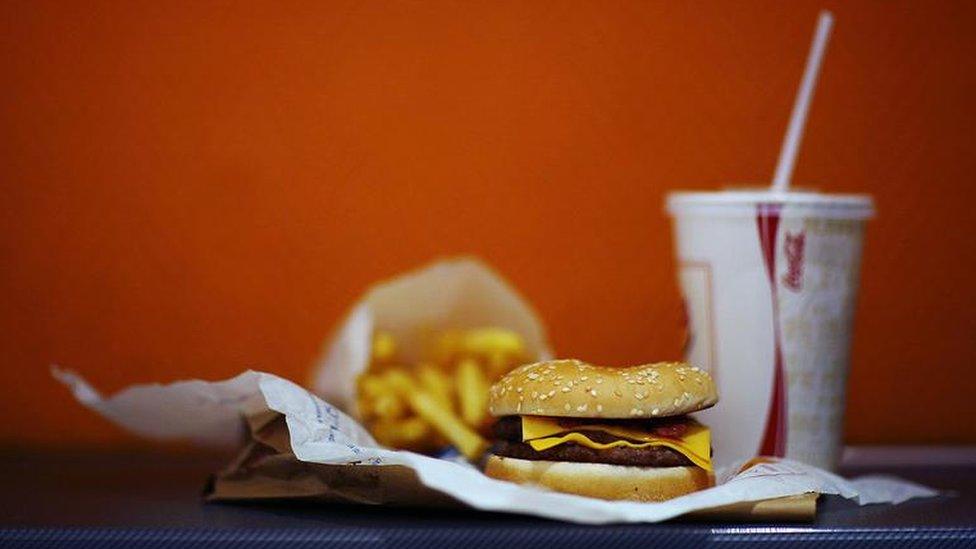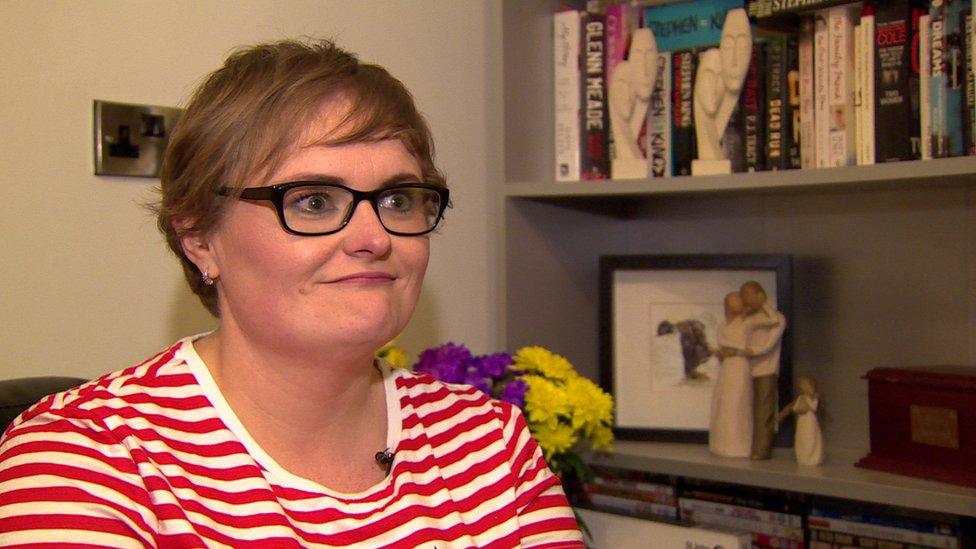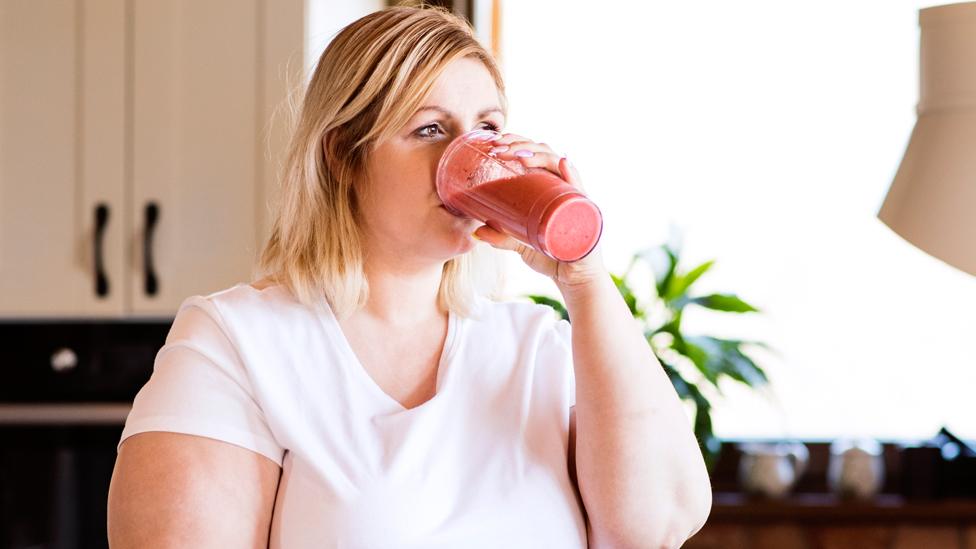Obesity-related deaths rise in Northern Ireland
- Published
- comments
Sarah went from a size 24 to a 14
Deaths involving obesity in Northern Ireland almost doubled over an eight-year period, official statistics show.
The Northern Ireland government figures show being overweight was listed on 64 death certificates in 2016.
That is up from the 33 mentions recorded in 2008.
The British Medical Association (BMA) said the number of death certificate references failed to fully represent the impact of the problem on society.
Dr Paul Darragh said: "Generally about 63% of the population here are overweight, around 25% are obese.
"This can lead to a whole range of lifelong health conditions including hypertension, diabetes, stroke and certain types of cancer."

The BMA wants food labelling that is more easily understood
There are about 14,500 deaths recorded in Northern Ireland annually, and obesity was mentioned on 487 certificates here between 2008 and 2016.
Dr Darragh said tackling the growing epidemic must start early.
"There is a need to take effective action. Around one in five children are obese, that is a burden that will impact their health for the rest of their lives," he said.
He called for:
Easily understood labels on food
Restrictions on the marketing of foods high in sugar, fat and salt
Better education on making informed food choices
Further action was needed on how food is marketed, especially towards children and young people, he added.

'I wanted to hide in the corner'
Sarah McMinn, 34, from Comber, County Down, struggled with her weight for most of her life.
She started to gain weight as a child, and her struggles were compounded when she was prescribed steroids for asthma.
From there, her weight "just ballooned".
"When I was younger I didn't notice the weight going on," Sarah said.

Sarah McMinn talks about her battle with her weight
"It was really only when I reached into my early teens, I realised I can't wear all the most fashionable stuff that everybody else was wearing.
"So you just sort of think: 'I'm just going to recede into myself a little and hopefully no one will notice'."
'Takeaway highway'
As her teenage years gave way to adulthood, Sarah said she "just keep putting on weight".
"Before you know it you are on the takeaway highway," she added.
It started to take a toll. A flight of stairs would leave her out of breath, a cold would go straight to her chest.
She had to "mentally gear" herself up to socialise.
"As much as you had a smile on your face, inside you were praying you could hide in the corner all night," she said.
At her heaviest, Sarah tipped the scales at more than 18 stone (252lbs).
But a photograph shocked her into action.
Meals are now planned and healthy snacks form an integral part of her diet.
She walks daily, runs, and has taken up playing football. And she's now almost five stone (70lbs) lighter.
Sarah says there are definite health benefits to her weight loss. Her breathing and fitness levels have improved.
"Physiologically, it has done me a power of good. I like the person I am physically."

The Institute of Public Health in Ireland estimates that of all the children in Northern Ireland in 2015, more than 30,000 are expected to die prematurely as a result of childhood obesity.
"The lifetime burden of childhood obesity is huge and, if unaddressed, will pose a burden for future generations, the economy and our healthcare system," said spokesman Kevin Balanda.
Northern Ireland's Department of Health insisted everyone should be concerned about "the impact on our health of being overweight or obese".
"We need to think of obesity as not just contributing to death but importantly the impact it can have in contributing to someone developing one of these chronic conditions and living with that for the rest of their lives," said a spokeswoman.
Separate statistics on the geographical spread of deaths linked to obesity show that between 2008 and 2016, the Belfast City Council area had the highest incidence, at 108 deaths.
This was followed by Armagh City, Banbridge and Craigavon, 57, Antrim and Newtownabbey, 49, and Mid and East Antrim, 48.
- Published24 September 2018

- Published27 September 2018

- Published12 September 2018
